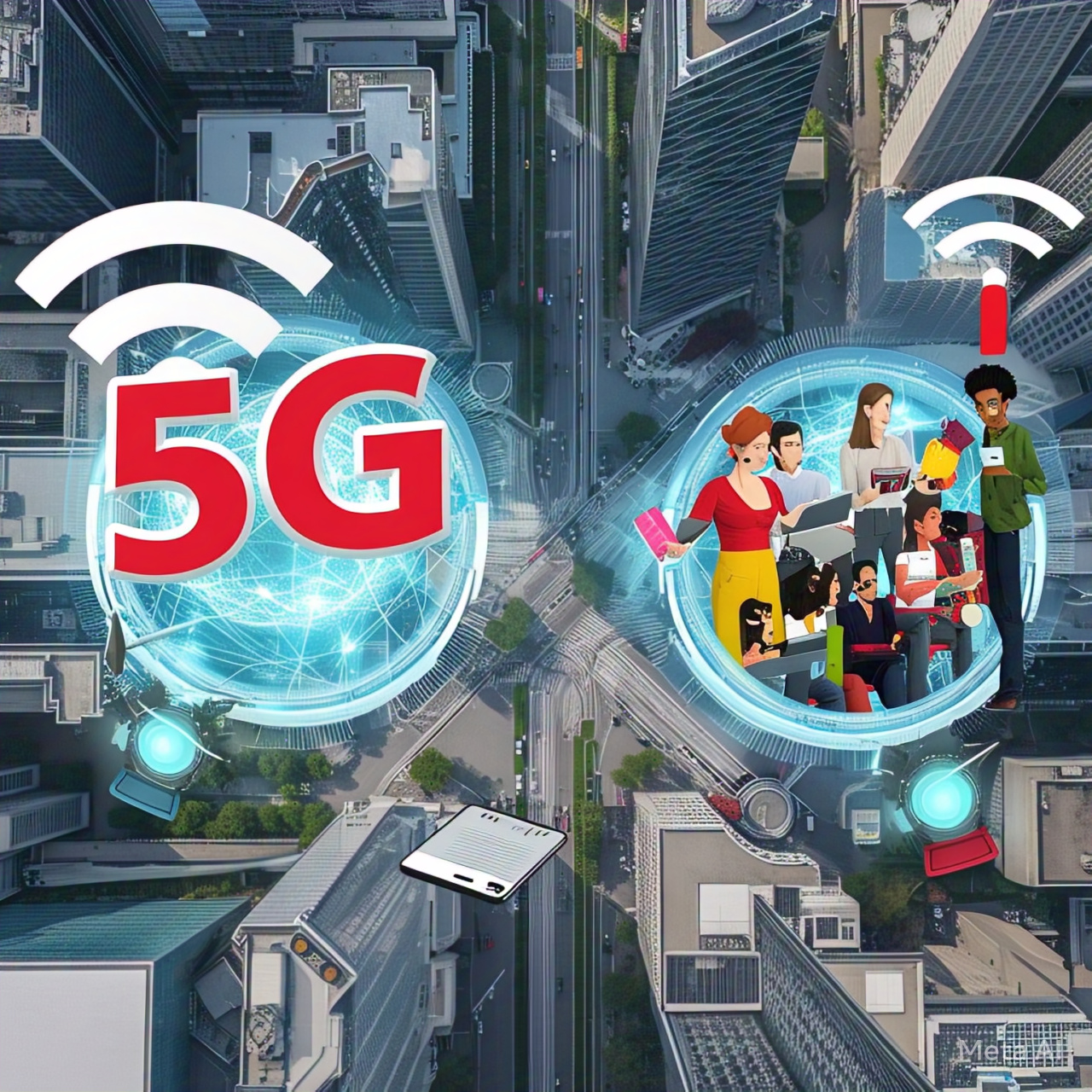Table of Contents
- Introduction
- Understanding 5G and Wi-Fi 6
- What is 5G?
- What is Wi-Fi 6?
- Key Differences Between 5G and Wi-Fi 6
- Speed and Performance Comparison
- Coverage and Accessibility
- Security and Reliability
- Use Cases: Where 5G and Wi-Fi 6 Shine
- Smart Cities and IoT
- Home and Business Networks
- Industrial and Enterprise Applications
- The Future of Internet Connectivity
- Conclusion
- FAQs
1. Introduction
The battle between 5G and Wi-Fi 6 is heating up as both technologies promise faster speeds, lower latency, and better connectivity. But which one will dominate the internet? The answer depends on various factors such as use cases, infrastructure, security, and performance. This article dives deep into the differences between 5G and Wi-Fi 6, helping you understand which technology is best suited for different scenarios.
2. Understanding 5G and Wi-Fi 6
What is 5G?
5G is the fifth generation of mobile network technology, designed to provide ultra-fast data speeds, minimal latency, and massive device connectivity. Unlike 4G, which primarily supports smartphones, 5G aims to connect everything from autonomous vehicles to smart cities.
What is Wi-Fi 6?
Wi-Fi 6, or 802.11ax, is the latest wireless networking standard designed to improve speed, efficiency, and security in local networks. It enhances connectivity for devices in homes, offices, and businesses by optimizing bandwidth and reducing congestion.
3. Key Differences Between 5G and Wi-Fi 6
| Feature | 5G | Wi-Fi 6 |
|---|---|---|
| Technology Type | Cellular (mobile networks) | Wireless LAN (local area network) |
| Speed | Up to 10 Gbps | Up to 9.6 Gbps |
| Latency | 1-10 ms | Less than 1 ms |
| Coverage | Wide-area (nationwide) | Local (homes, offices) |
| Cost | Subscription-based (carriers) | One-time installation |
| Ideal Use Cases | Smart cities, IoT, mobility | Homes, businesses, high-density areas |
4. Speed and Performance Comparison
Both 5G and Wi-Fi 6 offer speeds exceeding 1 Gbps, but they function differently:
- 5G networks leverage multiple frequency bands (low, mid, and high) to optimize performance.
- Wi-Fi 6 improves indoor connectivity by handling multiple devices simultaneously with OFDMA and MU-MIMO technology.
5. Coverage and Accessibility
- 5G provides nationwide and global coverage, making it ideal for outdoor and mobile applications.
- Wi-Fi 6 is best for homes, businesses, and public places, offering consistent connectivity within a fixed location.
6. Security and Reliability
- 5G networks use SIM-based authentication and advanced encryption, but they are vulnerable to cyber threats like network slicing attacks.
- Wi-Fi 6 offers WPA3 encryption and enhanced security features, reducing the risk of hacking in personal and enterprise networks.
7. Use Cases: Where 5G and Wi-Fi 6 Shine
Smart Cities and IoT
Winner: 5G
- 5G’s low latency and broad coverage make it the best choice for IoT devices, autonomous cars, and smart infrastructure.
Home and Business Networks
Winner: Wi-Fi 6
- Wi-Fi 6 offers stable, high-speed internet for streaming, gaming, and remote work at lower costs.
Industrial and Enterprise Applications
Winner: Both
- 5G powers real-time industrial automation.
- Wi-Fi 6 supports high-density office environments efficiently.
8. The Future of Internet Connectivity
Neither 5G nor Wi-Fi 6 will completely replace the other. Instead, they will coexist, serving different needs. As technology evolves, expect more seamless integration between both to optimize connectivity.
9. Conclusion
While 5G is revolutionizing mobile and outdoor connectivity, Wi-Fi 6 remains the king of indoor and enterprise networking. Choosing the right technology depends on your specific use case, cost considerations, and infrastructure availability.
10. FAQs
1. Will 5G replace Wi-Fi 6?
No, both technologies have distinct applications. 5G is ideal for mobile networks, while Wi-Fi 6 is better suited for indoor environments.
2. Which is faster, 5G or Wi-Fi 6?
Both can achieve speeds of up to 10 Gbps, but Wi-Fi 6 is generally faster in local networks, while 5G excels in mobile connectivity.
3. Is 5G more expensive than Wi-Fi 6?
Yes. 5G requires a carrier subscription, while Wi-Fi 6 is a one-time investment with no monthly fees.
4. Can I use both 5G and Wi-Fi 6 together?
Yes! Many devices support both Wi-Fi 6 for home use and 5G for outdoor mobility.
5. Which is better for gaming, 5G or Wi-Fi 6?
Wi-Fi 6 offers lower latency and stable connections, making it better for online gaming at home.




